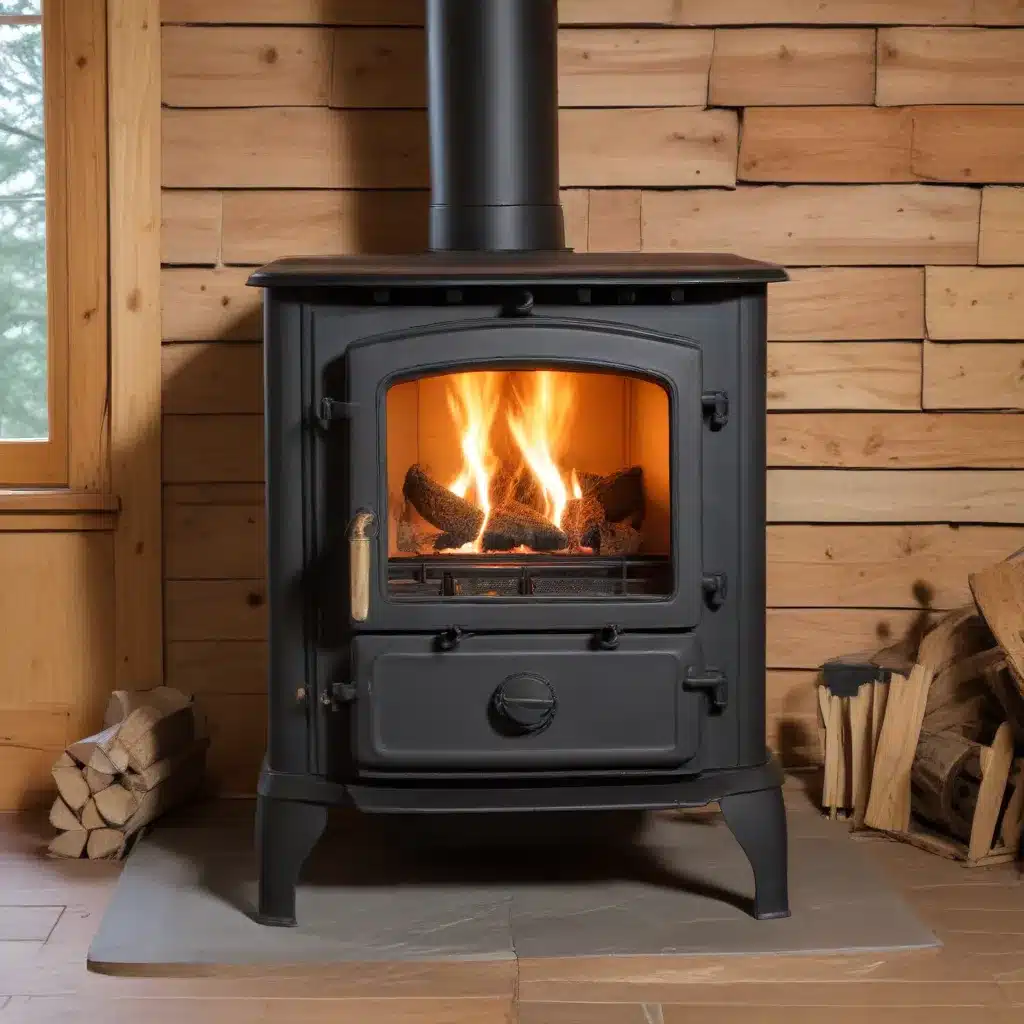
Understanding the Importance of Airflow in Wood Stoves
Achieving optimal airflow is crucial when it comes to maximizing the heating performance and fuel efficiency of your wood stove. The way air moves through the stove and the combustion chamber directly impacts the burn rate, heat output, and overall efficiency of the system. As an experienced heating expert, I’ll dive into the key principles of airflow management and share practical tips to help you get the most out of your wood stove.
The Role of Airflow in Wood Stove Combustion
At the heart of a wood stove’s operation is the combustion process, where the wood fuel interacts with oxygen to release heat energy. Proper airflow is essential for this process to occur efficiently. The amount and movement of air into, through, and out of the stove directly affect the temperature, burn rate, and overall combustion quality.
If the airflow is restricted or imbalanced, it can lead to incomplete combustion, resulting in reduced heat output, increased fuel consumption, and the potential for creosote buildup in the chimney. Conversely, well-managed airflow can optimize the combustion, allowing the wood to burn more completely and release its full potential for heat generation.
Understanding the Principles of Airflow Dynamics
To better understand how to optimize airflow in your wood stove, it’s helpful to explore the basic principles of airflow dynamics. Air movement within the stove is influenced by several factors, including:
-
Air Intake: The primary air intake, usually a damper or air control lever, regulates the amount of oxygen entering the combustion chamber. Adjusting this intake can significantly impact the burn rate and heat output.
-
Combustion Chamber Design: The shape, size, and baffling system of the combustion chamber play a crucial role in guiding the airflow and promoting efficient combustion.
-
Exhaust Flow: The design and size of the chimney or flue system, as well as any obstructions or blockages, can affect the rate at which exhaust gases are expelled from the stove, influencing the overall airflow.
-
Pressure Differentials: The difference in pressure between the inside of the stove and the outside environment can create a natural draft, driving the flow of air and combustion gases through the system.
By understanding these fundamental principles, you can make informed adjustments to optimize the airflow in your wood stove, leading to improved heating performance and fuel efficiency.
Practical Tips for Optimizing Airflow
Now that we’ve explored the importance of airflow, let’s dive into some practical tips to help you achieve the best possible results from your wood stove:
Adjust the Primary Air Intake
The primary air intake, often a damper or air control lever, is the primary means of regulating the amount of oxygen entering the combustion chamber. Start by fully opening the air intake when lighting the fire, then gradually adjust it as the fire stabilizes to find the optimal balance between heat output and fuel consumption.
As a general guideline, a more open air intake will result in a hotter, faster-burning fire, while a more restricted intake will create a slower, cooler burn. Experiment with different settings to discover the sweet spot for your specific wood stove and the type of wood you’re using.
Maintain a Clean Combustion Chamber
Buildup of ash, creosote, or other debris in the combustion chamber can impede airflow and disrupt the efficient combustion process. Regularly clean the chamber, removing any obstructions or deposits to ensure unhindered air movement.
Pay close attention to the condition of the stove’s baffles, which are designed to guide the flow of air and combustion gases. If these baffles become clogged or damaged, they can significantly impact the overall airflow and performance of the stove.
Ensure Proper Chimney Airflow
The chimney or flue system plays a crucial role in the overall airflow dynamics of your wood stove. Make sure the chimney is the appropriate size for your stove, as a mismatch can create airflow issues. Additionally, regularly inspect the chimney for any blockages, such as creosote buildup or bird nests, that could restrict the exhaust flow.
Consider the height and position of your chimney as well. Taller chimneys tend to create a stronger natural draft, while chimneys situated in areas with significant wind or other obstructions may experience airflow challenges.
Experiment with Airflow Adjustments
Every wood stove and installation is unique, so it’s important to approach airflow optimization as an ongoing process of experimentation and adjustment. Pay close attention to how your stove responds to changes in the air intake, combustion chamber, and chimney conditions.
Take notes on the effects of different adjustments, such as how they impact the burn rate, heat output, and fuel consumption. This will help you develop a better understanding of your stove’s specific airflow requirements and allow you to fine-tune the system for maximum efficiency.
Stay Informed and Seek Professional Guidance
As you navigate the world of wood stove airflow optimization, it’s important to stay up-to-date with the latest industry developments and best practices. Regularly consult reputable resources, such as the Wood Stove Heaters blog, to learn about new technologies, research findings, and expert insights.
If you encounter any complex issues or have specific questions about your wood stove’s airflow, don’t hesitate to seek the guidance of a professional chimney sweep or wood stove technician. They can provide invaluable advice and assistance in diagnosing and resolving any airflow-related challenges you may face.
Optimizing Airflow for Maximum Heating and Efficiency
By understanding the principles of airflow dynamics and implementing practical optimization strategies, you can unlock the full potential of your wood stove, enjoying improved heating performance, enhanced fuel efficiency, and a cleaner, safer burning experience.
Remember, the journey of optimizing your wood stove’s airflow is an ongoing process that requires patience, experimentation, and a keen eye for detail. With the right knowledge and a commitment to maintaining your wood stove, you can ensure that your heating system operates at its best, providing you with reliable, sustainable warmth for years to come.


